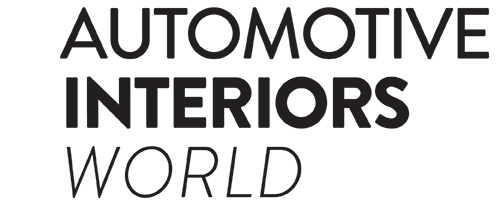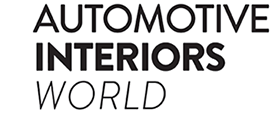The SDV revolution isn’t just about cars getting smarter. It’s about reshaping an entire industry – its tools, timelines, talent and value propositions. Software-defined vehicles represent the convergence of hardware, software and cloud into a single platform that lives, evolves and even improves after it hits the road
The introduction of CASE (connected, autonomous, shared and electrified) sparked a global transformation in the automotive industry, initiating a shift toward software-centric vehicles. This evolution laid the groundwork for what is now widely known as the software-defined vehicle.
What began as a hardware-to-software transformation guided by the CASE framework has now evolved into a full-scale commitment to SDVs. Today, software isn’t just an add-on, it’s the driving force shaping the future of global vehicle manufacturing.
Analysts project exponential SDV market growth by 2025 driven by advances in AI, pervasive connectivity and, above all, rising consumer demand for smart, seamlessly upgradable vehicles. Three major forces are shaping this global transformation: technical foundations, organizational transformation and evolving market expectations.
At their core, SDVs treat software as the primary product, enabling features such as over-the-air updates, personalized in-vehicle experiences and autonomous capabilities. But delivering on that promise requires rethinking how vehicles are engineered, from the initial concept through post-sale evolution.
SDVs also require a fundamental rethink in how vehicles are designed, developed and maintained. To support this shift, the industry is transitioning from traditional electrical/electronic (E/E) architectures to centralized zonal systems powered by high-performance computers (HPCs). This shift boosts scalability while dramatically reducing system complexity.
In essence, SDVs are living digital platforms that evolve through cloud-driven software updates. This continuous evolution enables vehicles to improve even after they’ve been sold, retaining, and even increasing, their value over time.
Technical foundations – Zonal architectures and HPCs
As vehicles transition into software-defined platforms, traditional E/E architectures are giving way to zonal designs powered by HPCs. This architectural evolution replaces the legacy model, often built around dozens or even hundreds of discrete electronic control units (ECUs), with centralized compute nodes managing entire vehicle zones.
The benefits are significant: zonal architecture reduces wiring complexity by up to 30%, lowers vehicle weight, and simplifies the integration of key systems such as ADAS, in-vehicle infotainment (IVI) and telematics.
But this transformation isn’t purely technical. It demands a parallel cultural shift. Automotive development teams must increasingly adopt cross-functional, agile practices, collaborating more like tech startups than traditional manufacturing lines.
And crucially, software development doesn’t stop at the start-of-production (SOP). In the SDV era, software must be continuously maintained and iterated and not just across vehicle models, but across entire brand portfolios. This ongoing development cycle is essential for delivering updates, innovations and fixes long after a vehicle hits the road.
Hardware innovation and disruptions
Next-generation automotive multi-domain system-on-chips (SoCs) are engineered to manage multiple, potentially critical, workloads within a single chip. Leading industry players have introduced flagship SoCs, such as Snapdragon Ride Flex, Nvidia Drive Thor and Renesas R-Car X5H, to meet the growing demand for centralized computing platforms supporting advanced functionalities like autonomous driving (AD), ADAS and digital cockpits, including IVI. These innovative hardware solutions underpin the progression of SDVs and empower OEMs to develop robust SDV ecosystems.
These advanced technologies integrate mixed-criticality systems, running safety-critical functions (for example, AD/ADAS) alongside non-critical applications (for example, IVI) on the same chip. They employ isolation mechanisms to ensure that failures in one domain do not impact others. The development of such systems necessitates a tight hardware-software co-design approach, offering several benefits:
- Hardware establishes the foundation for isolation, performance and safety certification.
- Software facilitates dynamic resource management, security and regulatory compliance.
Ultimately, without robust hardware, software cannot assure deterministic safety. Conversely, without intelligent software, hardware capabilities remain underutilized. Therefore, the industry’s transition toward software-defined vehicles relies on advancements in both hardware and software domains.
The latest SoCs enabling high-performance, energy-efficient solutions are uniquely tailored for SDVs. While hardware innovations provide the foundation for mixed-criticality systems, software frameworks are essential to abstract complexity, ensuring portability across platforms.
Virtualization: The game-changer
In the development of SDVs, virtualization has emerged as a pivotal enabler redefining how software is conceived, tested and deployed.
Today’s cloud-first engineering approaches, coupled with the ‘big loop cycle’ – a continuous feedback loop from concept to production and back – have ushered in a strategic methodology known as ‘shift left’. This approach accelerates development timelines by moving testing and validation to earlier stages in the software lifecycle. Critically, it enables progress even when prototype hardware isn’t yet available.
By adopting virtualization and containerization technologies, developers can build and refine software in parallel with hardware design. One of the most powerful tools in this process is the digital twin, a virtual replica of a vehicle or system that enables real-world behavior to be simulated, analyzed and optimized.
Virtualization decouples software from physical hardware, empowering developers to use virtual ECUs (vECUs) to simulate hardware interactions. This reduces reliance on physical prototypes, significantly lowering development costs and shortening cycles.
Moreover, virtualization improves quality and security. Early detection of bugs leads to more stable releases, and system isolation ensures that safety-critical domains (like ADAS) remain protected from potential vulnerabilities in non-critical domains (like infotainment).
In short, virtualization is not just a supporting tool, it is a strategic lever. It transforms SDV development into an agile, scalable and cost-effective process, bridging the gap between concept and production with unprecedented speed.
 Middleware: The unseen hero
Middleware: The unseen hero
The evolution of SDVs is built on a diverse and layered middleware ecosystem, with each component playing a specific role across performance, safety, flexibility and scalability requirements.
At the foundation are real-time operating systems (RTOS) that ensure deterministic execution and support for safety-critical functions. QNX RTOS and Green Hills Integrity RTOS are long-established solutions, widely adopted for their proven safety certifications and robust partitioning. Zephyr RTOS, an emerging open-source alternative, is gaining traction in resource-constrained environments and offers a lightweight, modular architecture suitable for simpler vehicle functions. Alongside these RTOS platforms, AUTOSAR Classic and AUTOSAR Adaptive provide standardized software frameworks for embedded and high-performance ECUs, enabling modular development and interoperability. Classic AUTOSAR is optimized for static, deeply embedded systems, while Adaptive supports dynamic, service-oriented applications like autonomous driving.
Building on this base, a range of Linux-based operating systems extends flexibility and scalability to broader use cases. EB corbos Linux, developed by Elektrobit, and the Red Hat In-Vehicle Operating System offer open-source, safety-certified platforms optimized for containerization and cloud integration. Meanwhile, Android Automotive OS (AAOS) and Automotive Grade Linux (AGL) bring Linux to the infotainment and connected services space, enabling rapid development and app integration.
At the highest level of abstraction, comprehensive SDV stacks are emerging. Nvidia Drive OS is a production-grade middleware stack that combines a Linux-based foundation with hypervisor support, real-time scheduling and deep GPU integration to enable autonomous driving, perception and sensor fusion workloads.
The Eclipse SDV Initiative, through efforts like SCORE (Safe Open Vehicle Core), aims to create an open-source foundation for scalable SDV software development targeting high-performance ECUs. AGL’s SDV stack builds on its Linux base to support container orchestration, edge-to-cloud connectivity and modular vehicle services. Li Auto’s Halo OS, a recently open-sourced platform, delivers a modular and chip-agnostic architecture designed for smart vehicles, emphasizing flexibility, in-house control and rapid innovation.
Together, these middleware technologies form the backbone of the SDV revolution – enabling modularity, over-the-air upgradability, safety compliance and cross-domain integration across increasingly complex vehicle architectures.
Collaboration vs competition: The strategic fork for OEMs
The software-defined vehicle ecosystem is shaped by a complex interplay of stakeholders, each bringing unique strengths and facing distinct challenges. Legacy OEMs offer manufacturing scale but sometimes struggle with software development and integration. Technology leaders excel in cloud infrastructure and AI but may lack experience with automotive-grade hardware and embedded systems. Meanwhile, Tier 1 suppliers contribute deep domain expertise and key components, yet must navigate fragmented software stacks and integration hurdles.
In this fragmented landscape, collaboration becomes essential. Open-source platforms, shared middleware standards and cross-industry alliances are emerging as powerful enablers. They help to bridge gaps, accelerate development and drive innovation at scale.
Against this backdrop, auto makers face a strategic crossroads: build proprietary software platforms in-house which are costly and complex but fully controlled, or embrace collaborative ecosystems that offer shared infrastructure, faster deployment and standardization. There’s no one-size-fits-all answer. Success lies in clarity of purpose, executional excellence and alignment with long-term strategic vision.



